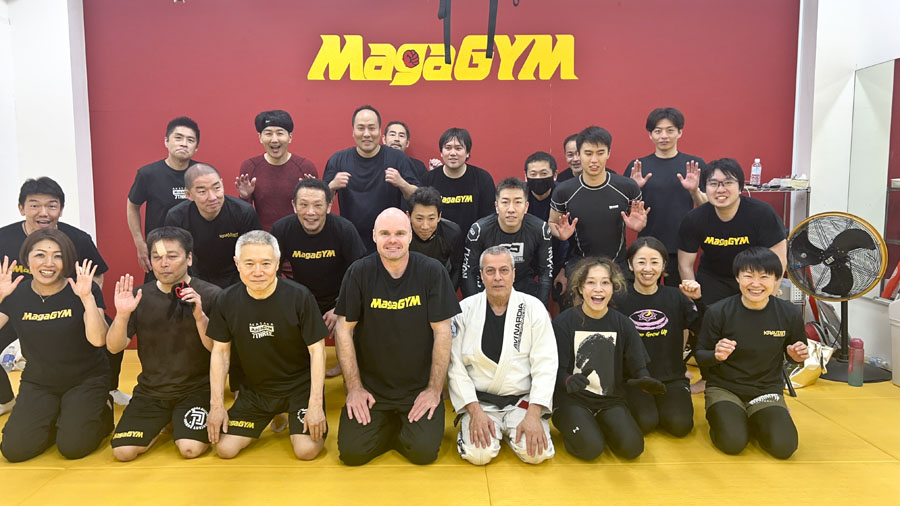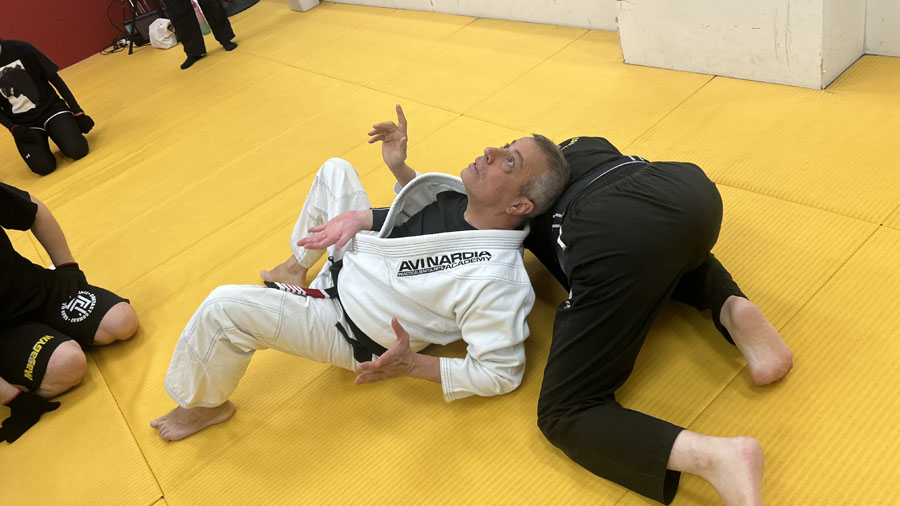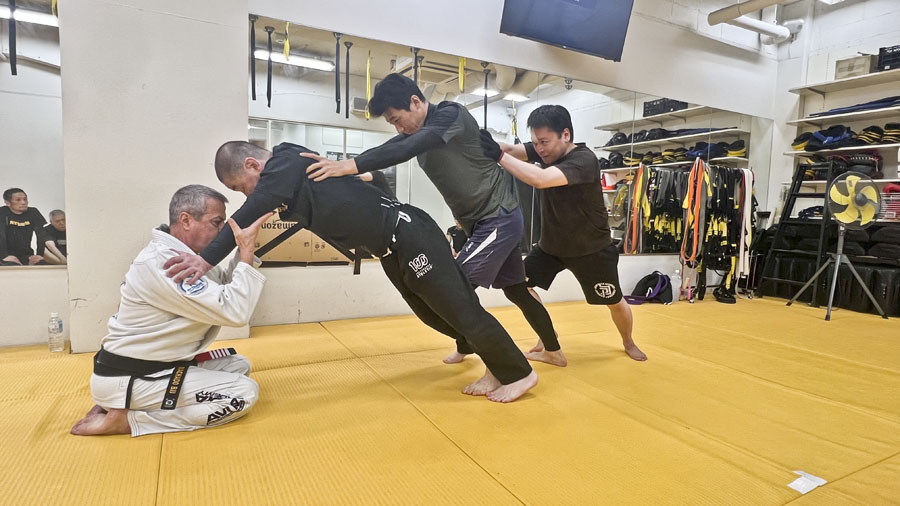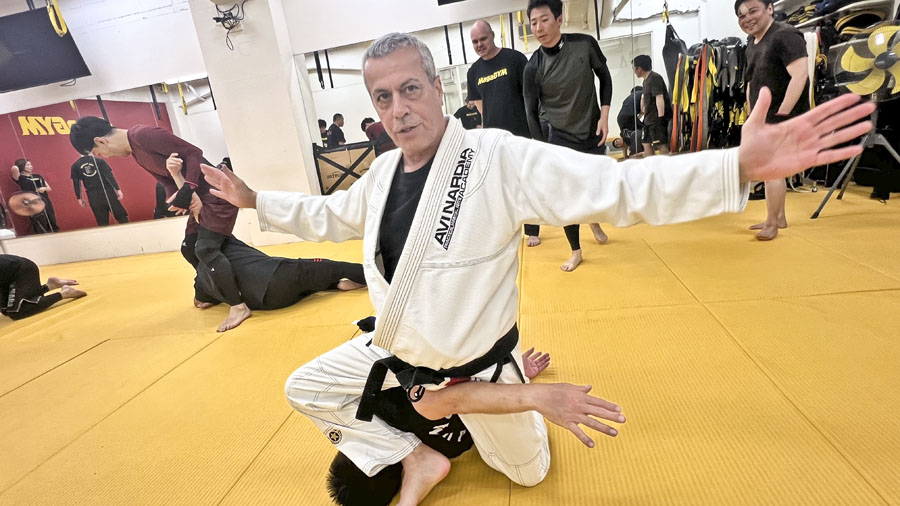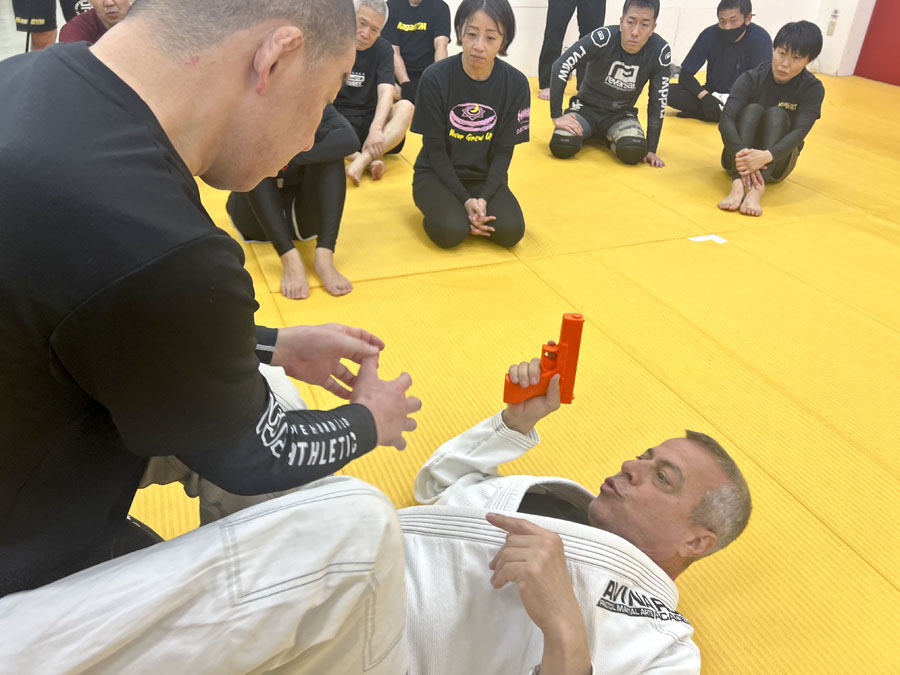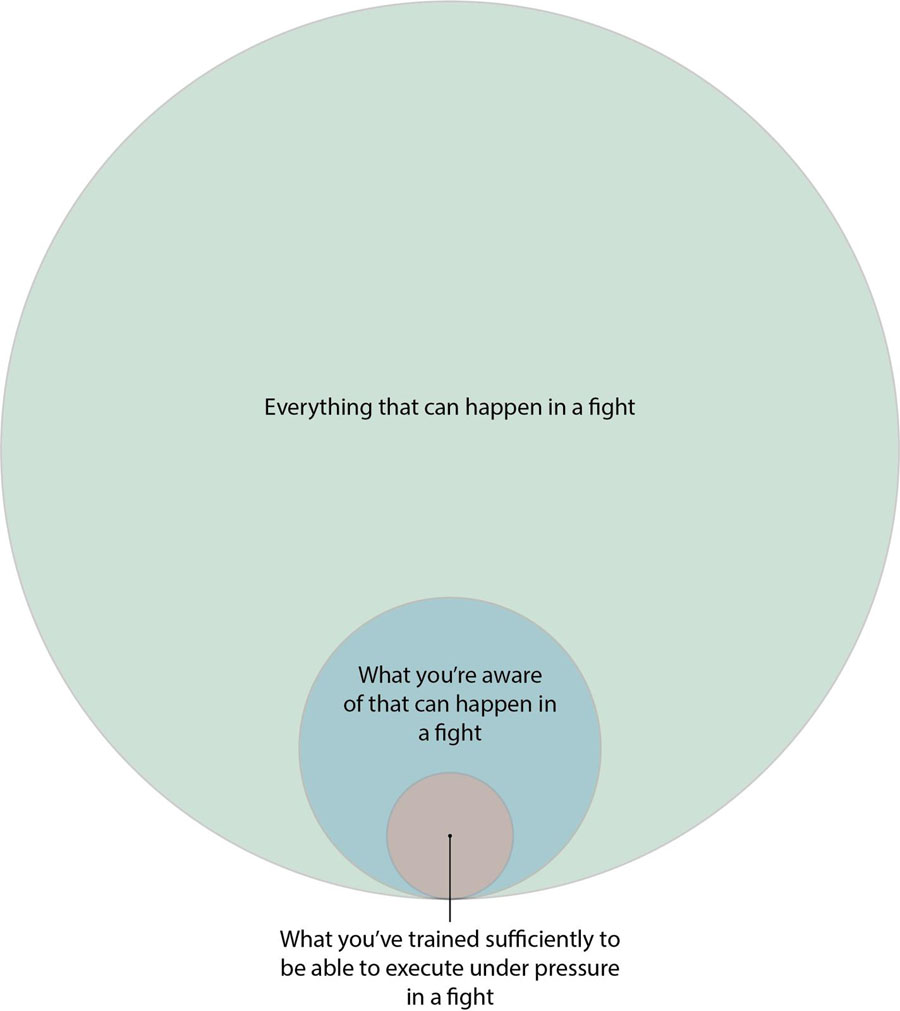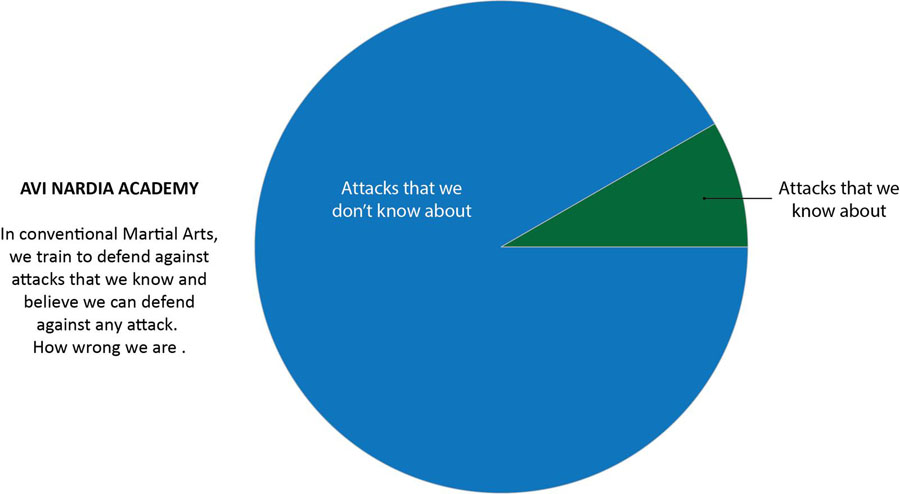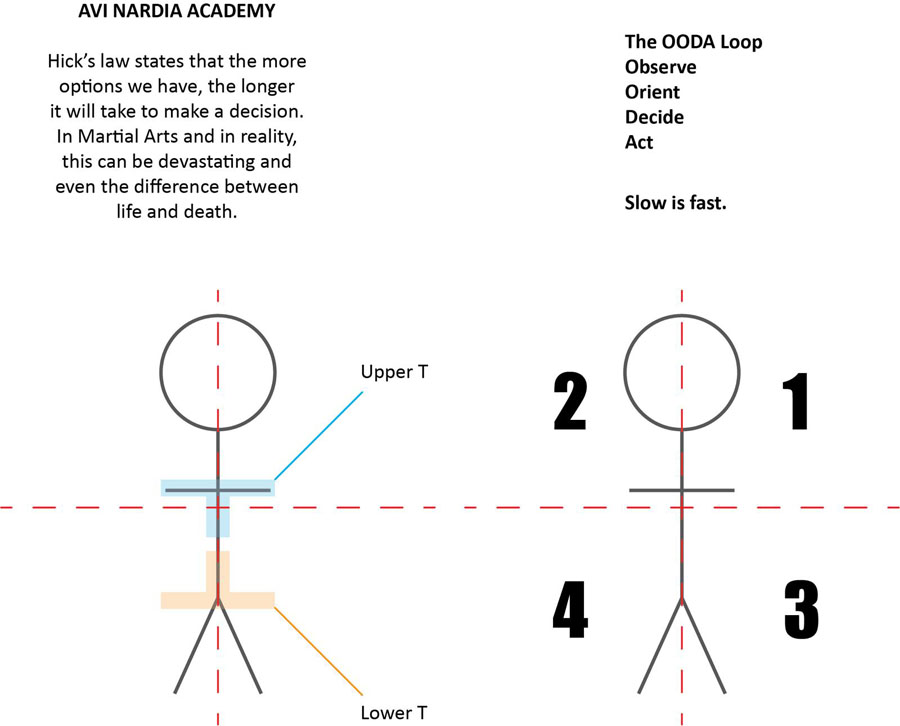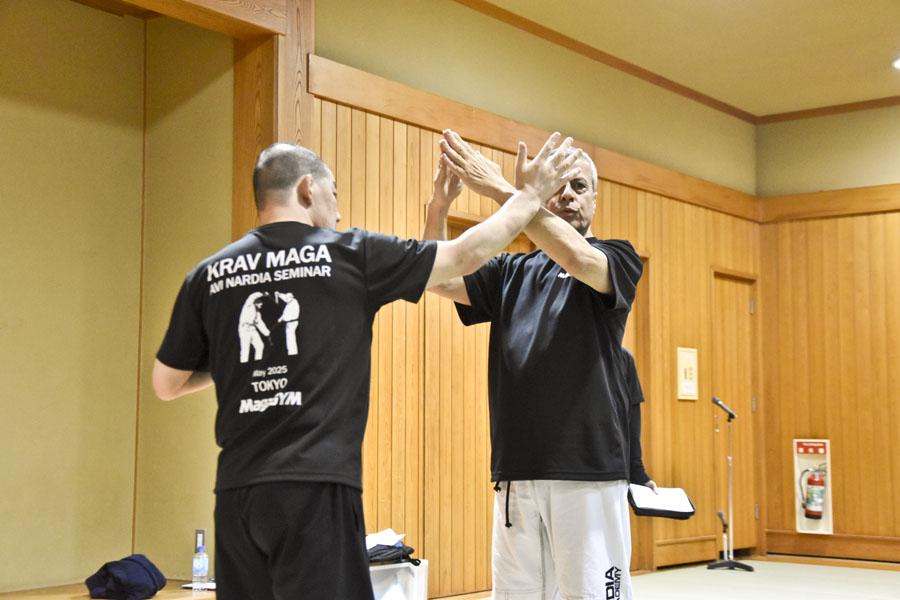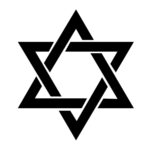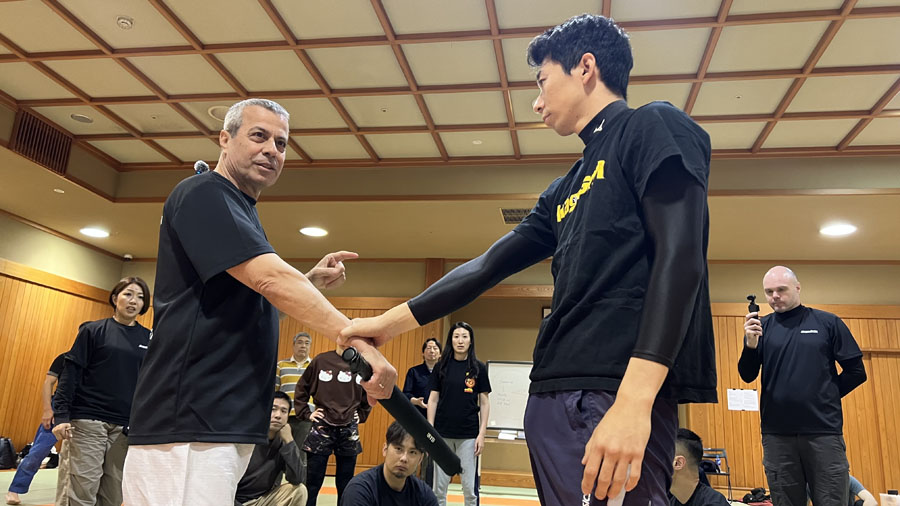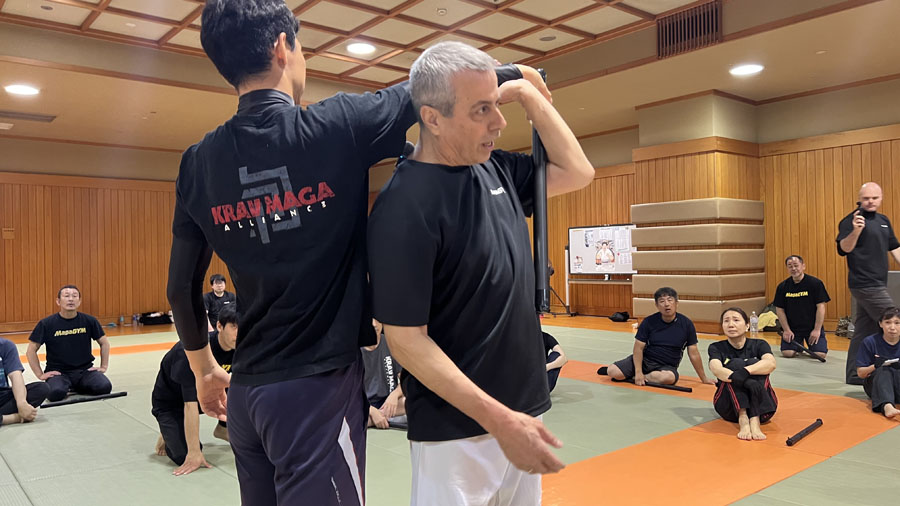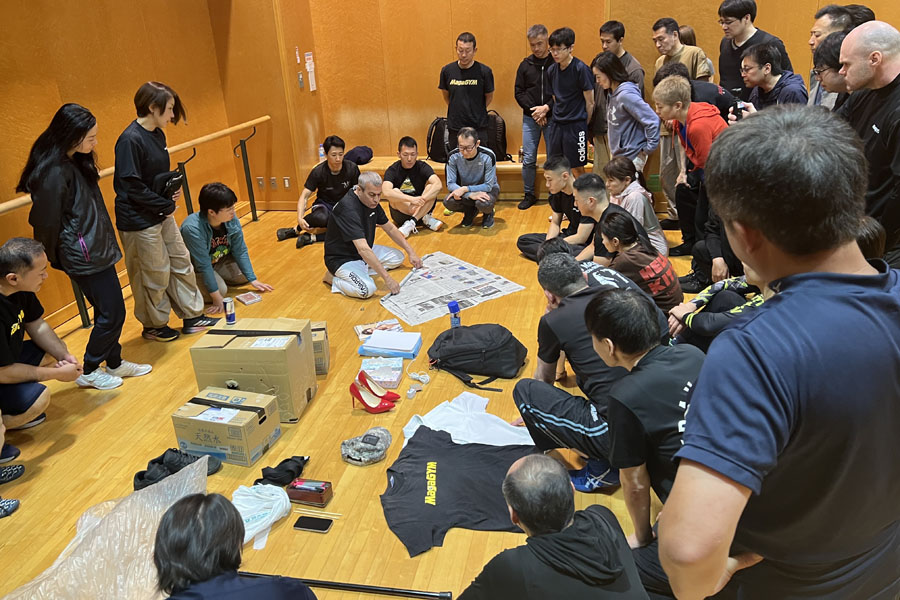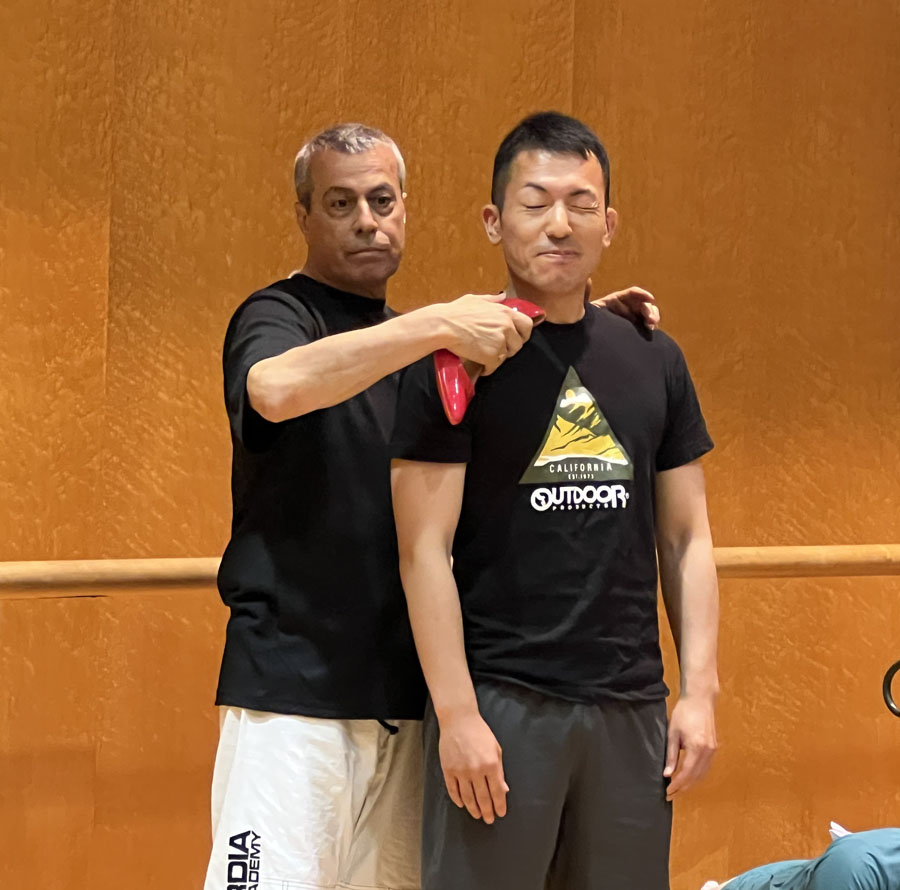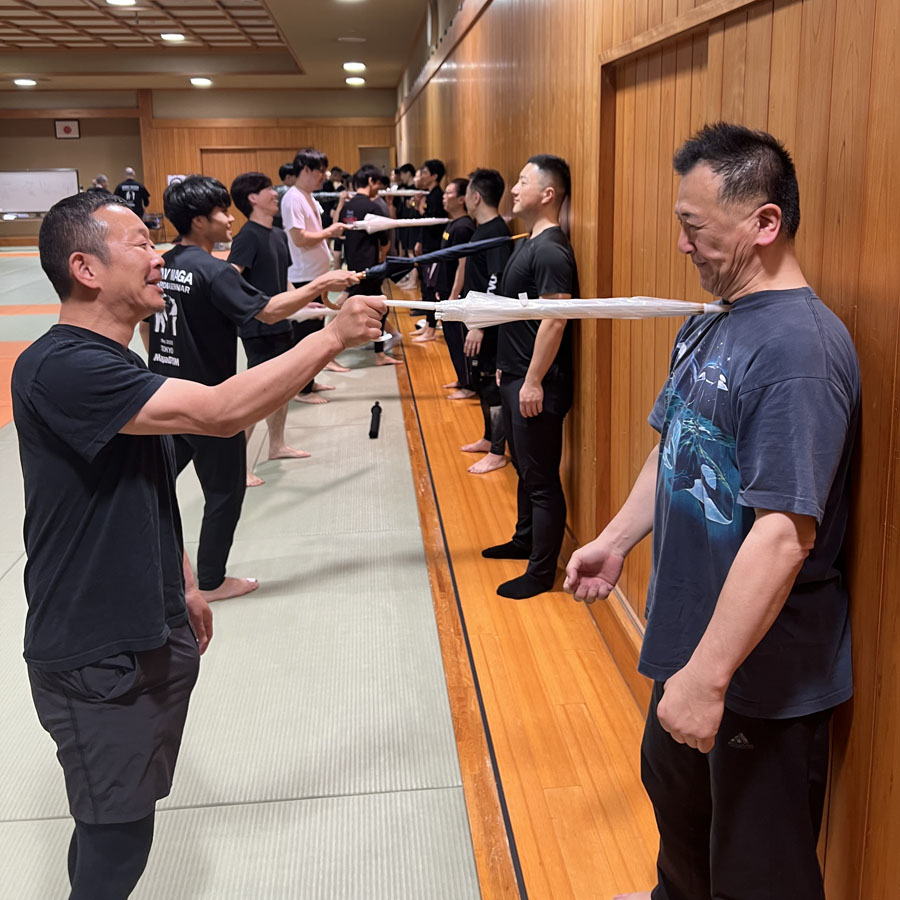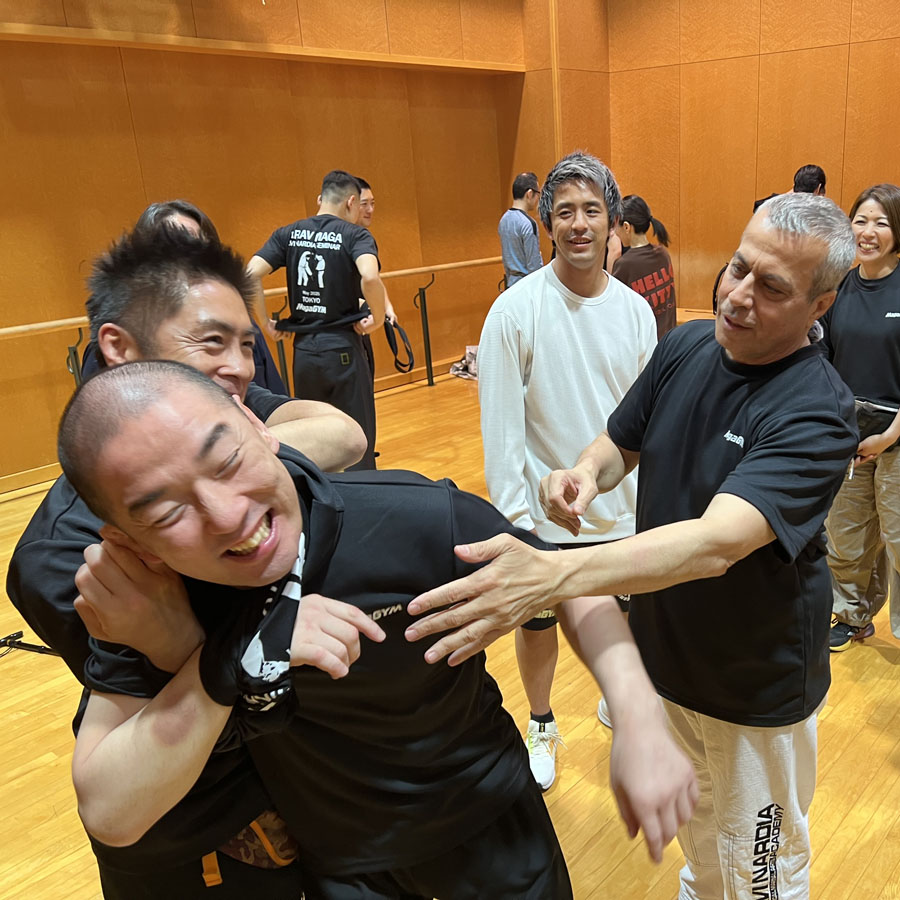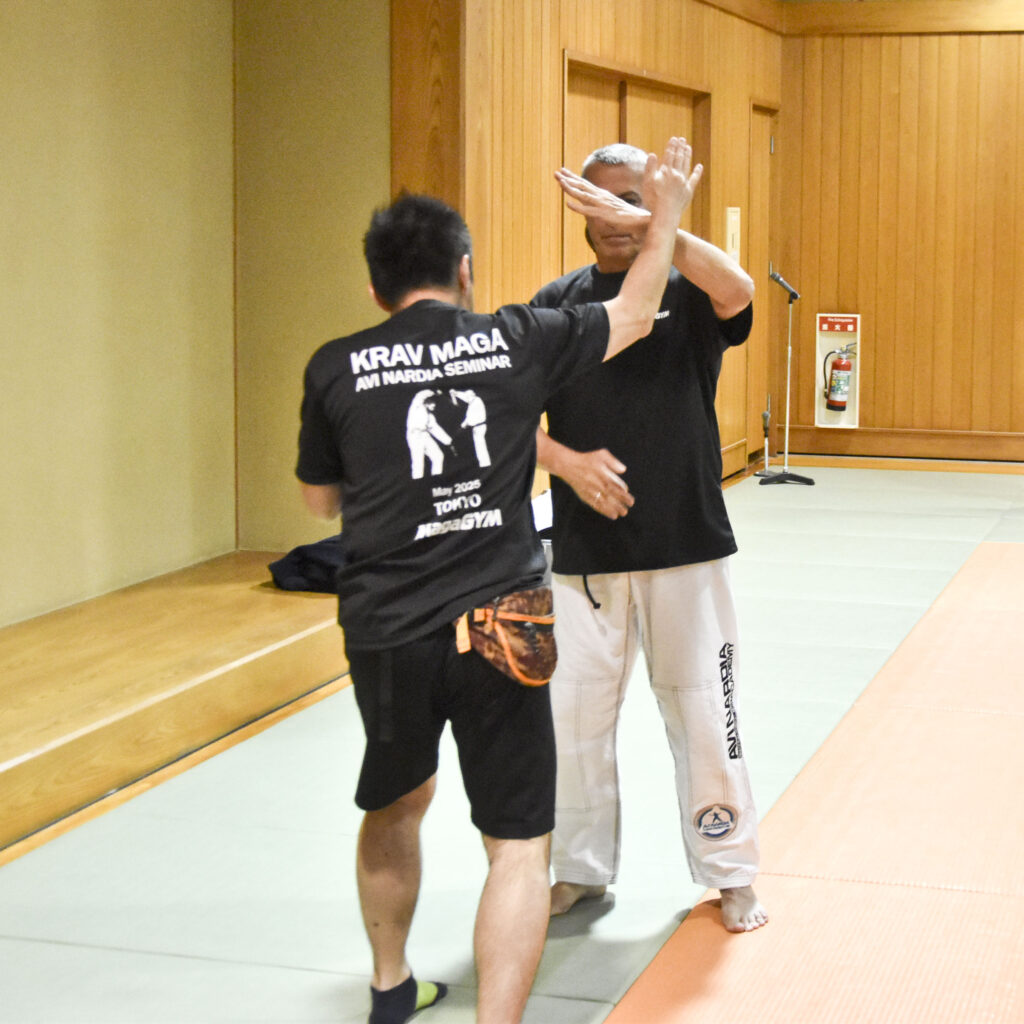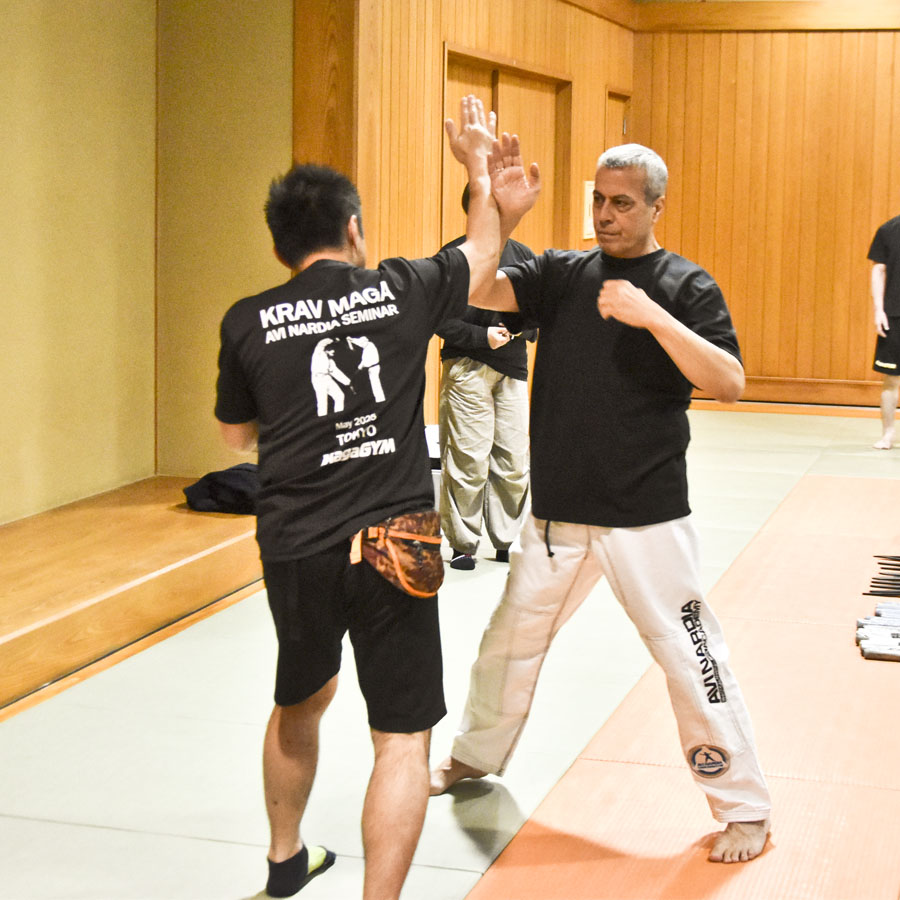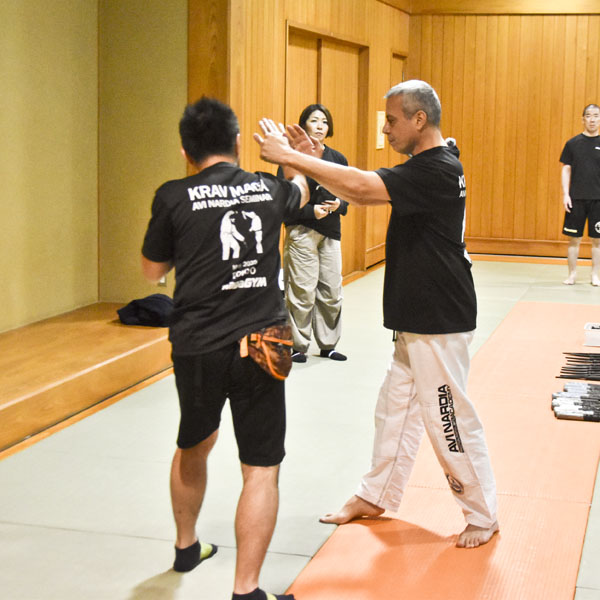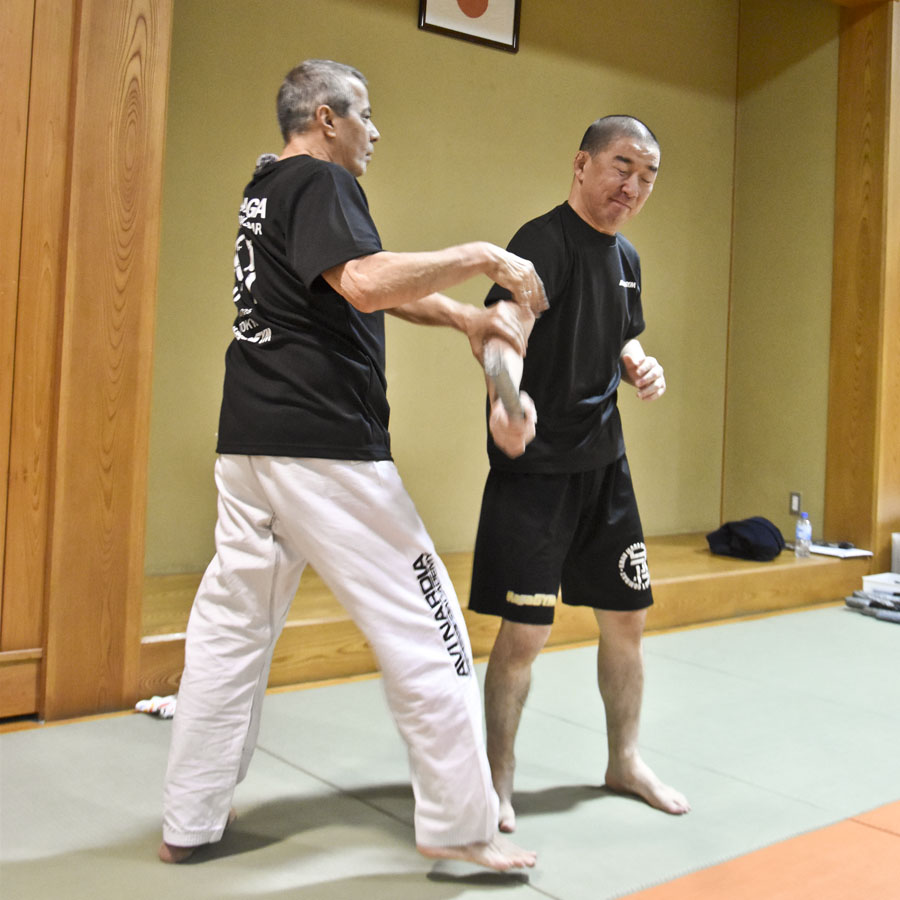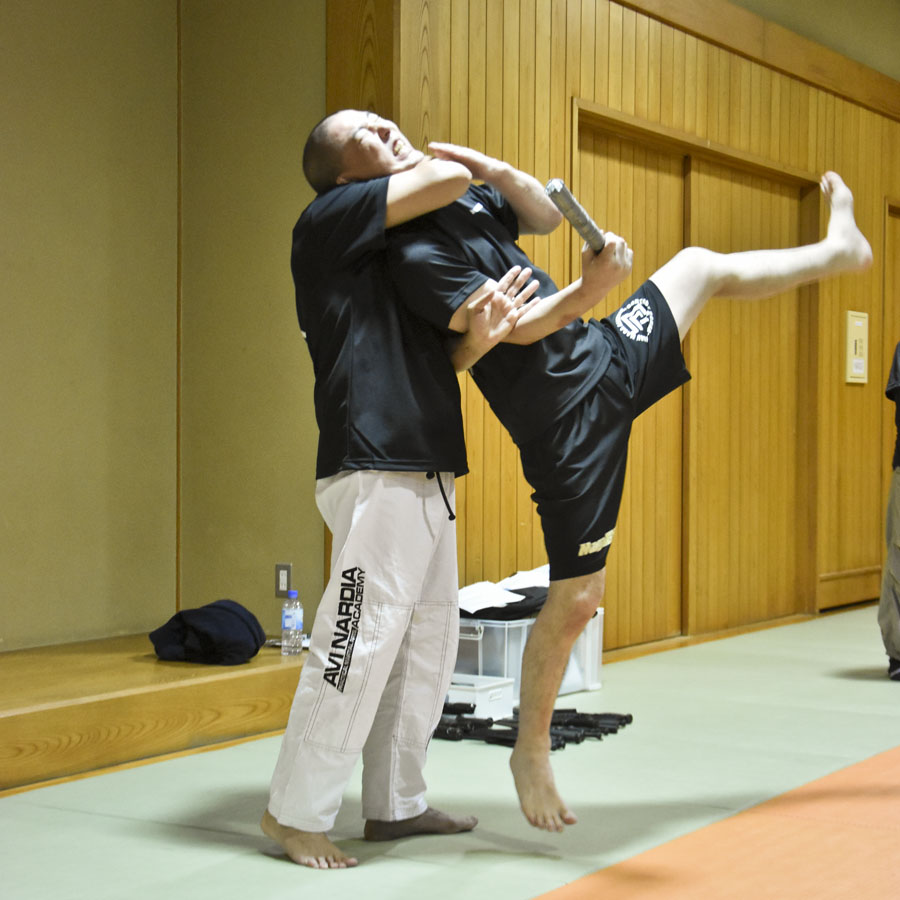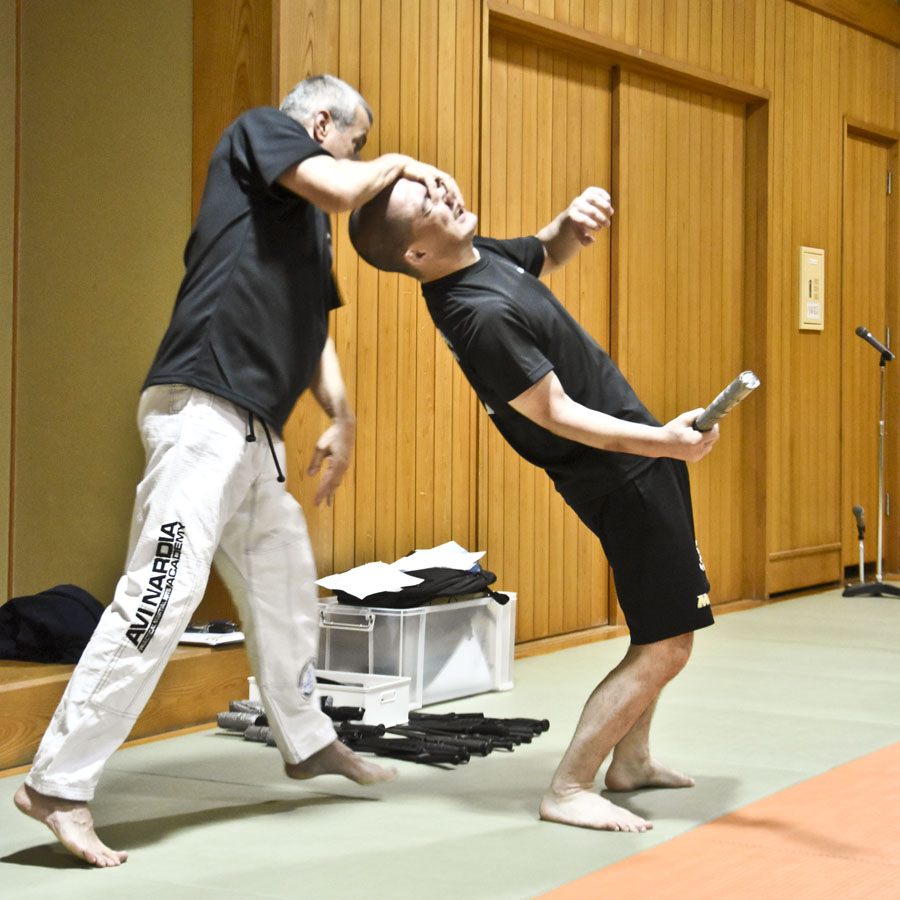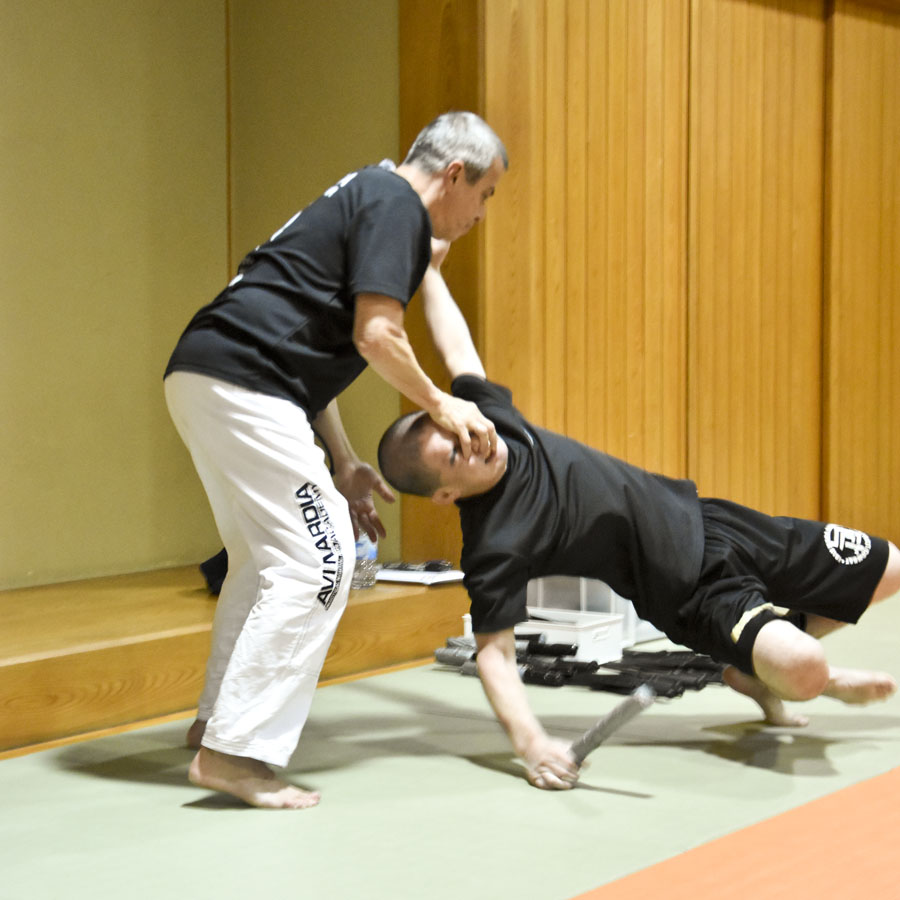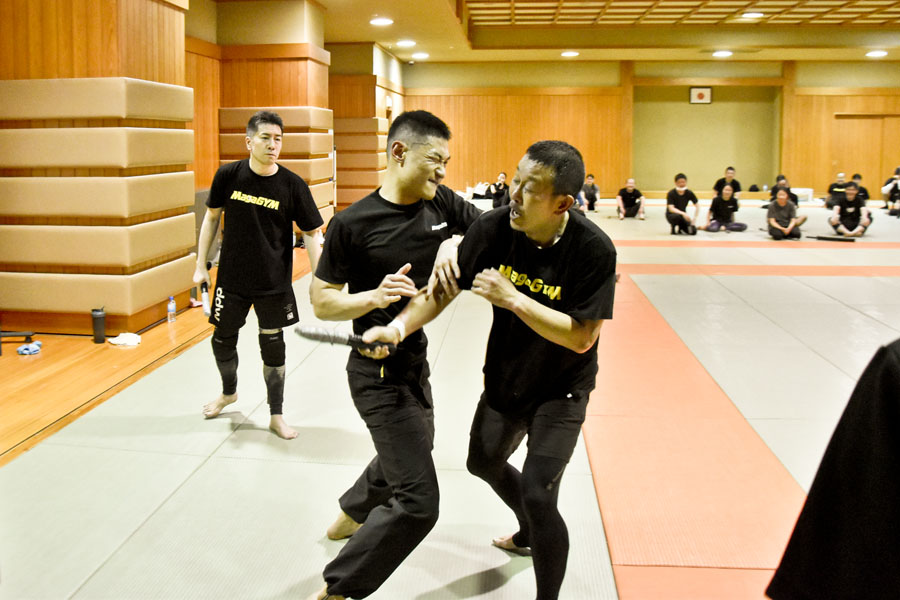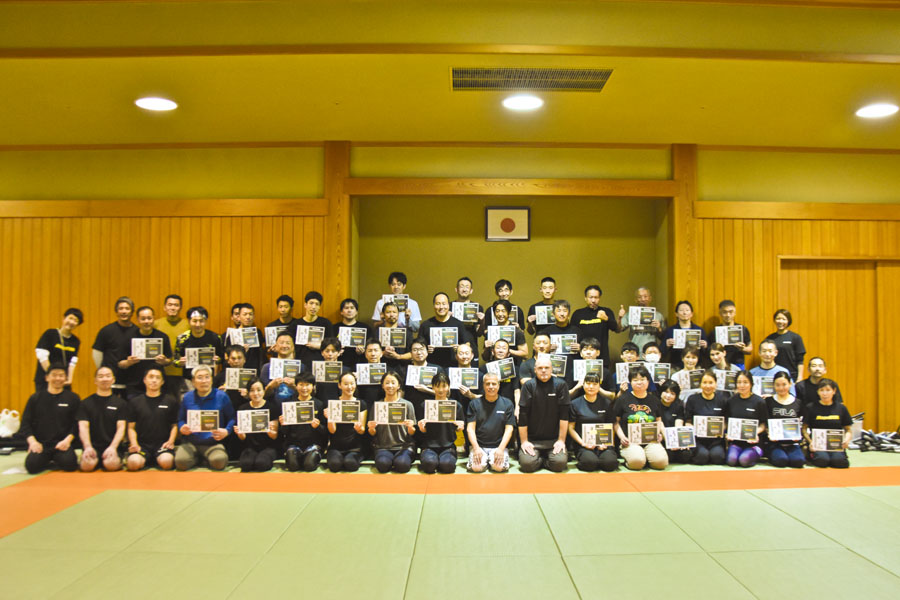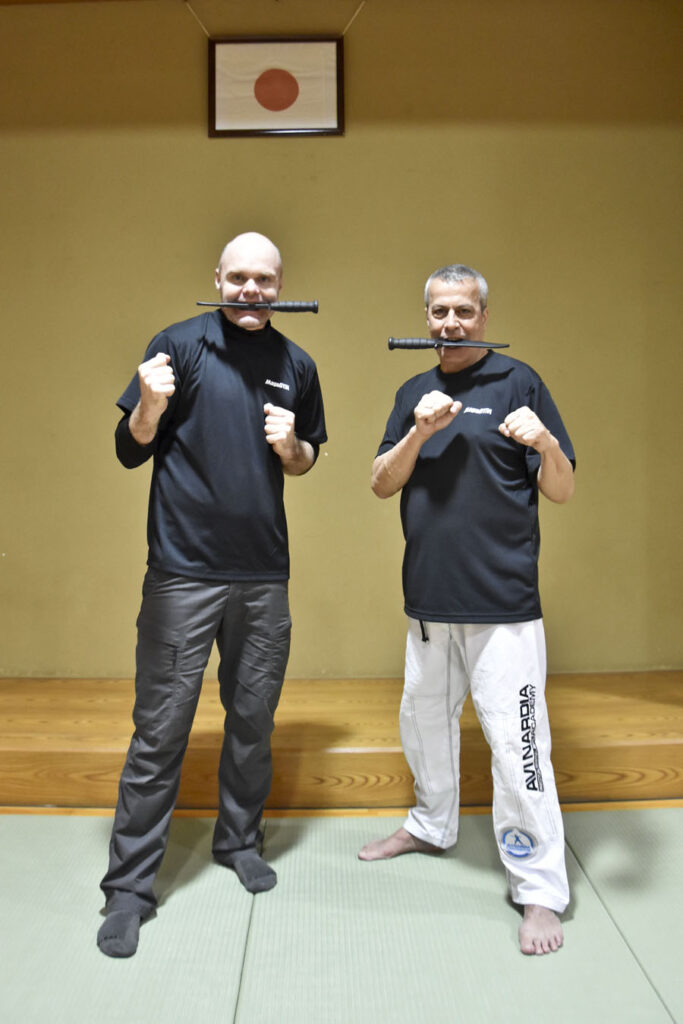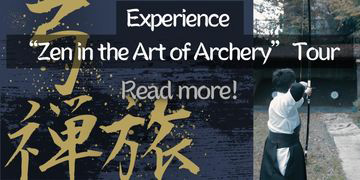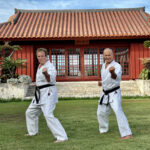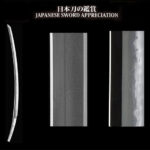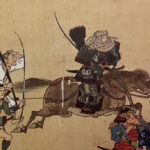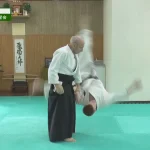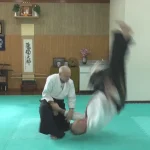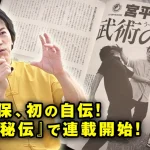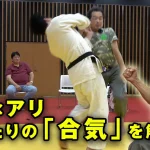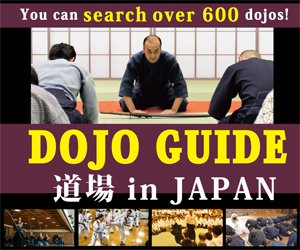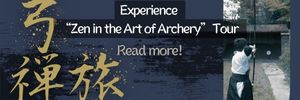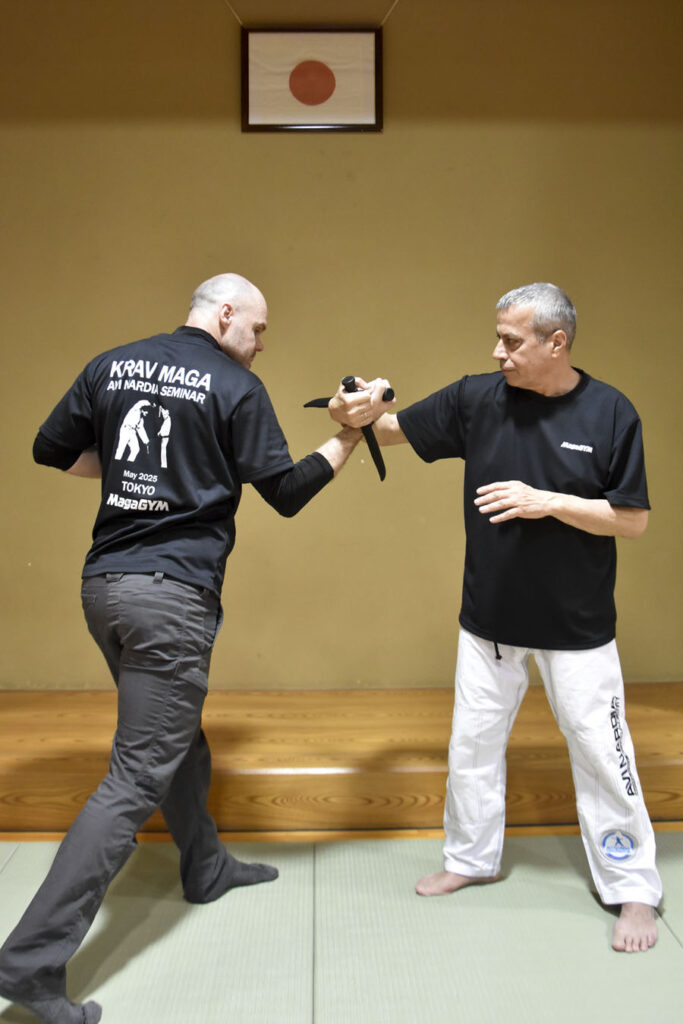
Text by Avi Nardia
Return to the Land of the Rising Sun
I recently completed an extraordinary visit to Japan, returning to the land of the rising sun and great samurai spirit as a teacher of Israeli martial arts. This journey held special significance for me, as I had previously studied various Japanese martial arts and cultural traditions there as a student. The transition from student to teacher fulfilled a prediction made many years ago by my Kendo and swordsmanship teacher, Kubo Akira Sensei, who told me, “One day you will return to Japan as a teacher.” I deeply honor his memory as his words have now come to fruition.
My visit was by invitation from
MagaGym in Tokyo, one of the most comprehensive and advanced centers for Krav Maga and combat fitness in Japan. The invitation came through Atsuhiro Kumagai San and Julian Littleton, an Israeli instructor, along with the entire MagaGym instructors team including Hiroshi Tokuyama, Ryouichi Sugaya, and Takeshi Nishio. Their welcoming spirit, exceptional hospitality, and sincere friendship created an environment of both rigorous training and warm cultural exchange.
Seminar Structure and Philosophy
We began with an instructors-only session on the first day, embodying the Krav Maga slogan:
“Fail to prepare is prepared to fail.”
This preparation enabled the instructors to effectively assist and guide participants during the subsequent public seminars.
The workshops were structured to accommodate various levels of experience, from beginners to advanced practitioners, focusing on the evolution of traditional Krav Maga into evolve Krav Maga and sharing Integrated Jiujutsu. This approach bridges the gap between short-term military/police training and comprehensive civilian martial arts development.
What is Integrated Jiujutsu?
Integrated Jiujutsu represents an advanced martial arts system I’ve developed based on my extensive experience instructing military, law enforcement, and VIP protection units worldwide. Traditional Krav Maga is primarily designed for military or police units, emphasizing short-term training for immediate self-defense capabilities, which naturally limits the depth and variety of techniques taught.
In contrast, Integrated Jiujutsu blends the practical self-defense principles of Krav Maga with diverse martial arts skills, including:
– Ground fighting techniques from Brazilian Jiu-Jitsu (BJJ)
– Throws from Judo and Sambo and leg lock
– Striking techniques from Boxing kickboxing
– Joint-locking methods from Japanese Jiujutsu
Integrated Jiujutsu emphasizes handling threats effectively while remaining standing whenever possible. However, should a fight transition to the ground, practitioners are well-equipped to respond calmly and effectively with comprehensive grappling techniques. The program also includes Krav MAGA parts systematically addresses weapon threats, teaching defense and disarming techniques against knives, firearms, sticks, and more, providing participants with realistic training for a wide range of scenarios.
Need also to explain on The Geometric Foundations of Martial Arts
A key component of our workshop explored how martial arts across the world can be understood through three basic geometric principles:
1. “Linear Movements:” Central to Karate, Kendo, and many Chinese martial arts like Shingi, emphasizing direct, efficient strikes and blocks
2. “Circular Techniques:” Predominantly found in Aikido and certain Chinese martial arts like Pakua, focusing on redirecting energy and flowing with an opponent’s force
3. “Triangular Positioning “Especially prominent in Filipino Martial Arts and BJJ, creating angles of attack and defense that provide tactical advantages
To achieve true combat effectiveness, a practitioner must study all three geometric principles and understand how they interrelate. For example, knowing how to counter a circular technique with a linear movement allows a fighter to gain a superior position, control the center, and maintain balance during an engagement.
Advanced Concepts to adjust better relative position as Door and Gyroscope
During the seminar, I introduced two fundamental concepts that distinguish Evolve Krav Maga:
The “Door” Concept
This approach is based on the principle that any movement contains a way to escape and counter. By identifying the metaphorical “door,” practitioners learn to open it and move outside the center of the attacker’s body, changing their relative position to reach the side or back for greater safety or escape. This positional advantage creates opportunities while minimizing risk.
The “Gyroscope” Technique
This advanced method is used to disorient attackers by confusing their sensory systems. While most basic approaches focus on affecting the five primary senses, the Gyroscope technique targets additional sensory systems, particularly the vestibular functions responsible for balance. By disrupting these systems, we create vertigo and confusion in the attacker, interrupting their OODA loop (Observe, Orient, Decide, Act). While they remain stuck in the Orientation phase, unable to make decisions or take effective actions, we gain crucial tactical advantages.
Cultural Cross-Pollination in Martial Arts Development
Many practitioners fail to research beyond what their teachers share, missing the rich historical connections between different fighting systems. My personal research revealed fascinating connections between seemingly disparate martial arts:
– What I demonstrate resembles Hubad from Filipino Martial Arts and Te-Gumi from Okinawan traditions, but I’ve developed it based on the concept of Magen David (incorrectly called simply “Star of David,” as it means “Shield of David” and represents protection)
– The symbolic relationship between upward and downward triangles in the Magen David reveals protective principles similar to those found in ancient symbols across India and Asia
– Filipino Martial Arts were heavily influenced by Spanish fencing after colonization?even the name “Philippines” derives from King Philip II of Spain (1543)
– Modern boxing and Filipino combat systems like Suntukan and Panantukan share fundamental principles in footwork, hand speed, and body mechanics while maintaining distinct characteristics
Even Peekaboo boxing is a defensive boxing style characterized by its unique stance, emphasis on head movement and slipping punches, and aggressive counter-attacks. Developed by Cus D’Amato, the style was famously popularized by Mike Tyson.
? D’Amato was known to study fencing, especially the principles of timing, distance, and rhythm.
?He applied these principles to boxing to enhance defensive movement and precision.
?The idea of “attack by drawing” in fencing (baiting an opponent into making a move, then countering) closely parallels the peek-a-boo philosophy.
So while Cus D’Amato wasn’t a professional boxer himself, his deep study of boxing, influence from fencing, and psychological training methods made him one of the most influential boxing trainers in history.
In the arts of combat we study from each others and that’s the only way to keep progress and Krav Maga is progressive MA and that’s why when said tradition KM we counter first principles of Krav which is to evolve
It’s important to note that Filipino Martial Arts were introduced to Israel relatively recently by Frank Bram from USA CSSD (Common Sense Self Defense), a good friend of mine. The integration is still evolving, and I anticipate many will incorporate FMA techniques into their systems. However, I’ve observed that some attempt to adopt these techniques without fully understanding the underlying principles?a “copy and paste” approach that misses crucial nuances. My methodology differs in that I thoroughly research and address specific defensive problems, ensuring complete comprehension rather than superficial imitation.
The Evolution of Israeli Martial Arts
When I returned to Israel in 1993, I worked to revitalize Israeli combat systems:
– I reintroduced the original name “Kapap” (Krav Panim El Panim, Hebrew for “face-to-face combat”) alongside Krav Maga
– Many don’t fully understand the history: Imi Lichtenfeld (also known as Sade), one of Krav Maga’s founders, began as a fitness instructor for the Israeli Palmach units before becoming head of Krav Maga training after Israel’s founding in 1948
– Kapap actually predated and influenced the development of Krav Maga
Philosophical Approach to Combat Arts
My research philosophy follows the Japanese concept:
– 古いものが新しいものを理解するかどうかの研究 (Furui mono ga atarash? mono o rikai suru ka d? ka no kenky?)
– Or simply “稽古照今” (Keiko Shokon) ? “Study the old to understand the new”
Workshop Content and Progression
Our seminar in Japan followed a carefully structured progression:
Introduction to Stick Fighting
– Basic principles and safety considerations
– Five points of attack
– Weapon retention techniques
– Opening door concept application
– Angles of movement
– Te Gumi triangle transfers (from above and below)
– Gyroscope application
– Disarming techniques
Improvised Weapons
– Introduction to improvised weapons and associated risks
– Defense against various threats (including date rape drugs)
– Defensive equipment carried on our person
– Identifying defensive tools in our environment
– “Use it or lose it” principle
– Using the attacker’s equipment against them
– Empowerment through environmental awareness
Knife Defense
– Principles of knife defense
– Attack angles and patterns
– Entrapment techniques
– Gyroscope application with bladed weapons
– Defense against committed attacks with disarms
– Differentiating between committed and uncommitted attacks
– Mitigation strategies when full defense is not possible
Throughout the seminar, we integrated striking techniques with ground grappling, methods for controlling and subduing opponents from standing positions, and effective responses for ground survival. For maximum realism, we conducted all training in normal sports attire rather than traditional gi uniforms.
Comprehensive Systems for Civilian Training
Beyond the immediate seminar content, I explained how our training programs have evolved to meet diverse needs:
We offer both short and comprehensive courses:
– Short courses that include firearm and Close Quarters Battle (CQB) training
– Extended programs covering VIP protection, originally developed for government personnel but now adapted for civilian application
For long-term students who train consistently (as opposed to those who merely attend occasional seminars), we offer progressive programs:
– Israeli Jiujutsu: a more advanced form of Krav Maga with a belt ranking system
– Civilian Krav Maga: Israeli Jiujutsu adapted for everyday individuals including children
– Brazilian Jiu-Jitsu: focusing primarily on ground work under Machado BJJ certification
The most dedicated students pursue what we call Integrated Jiujutsu, combining all these elements for the most comprehensive training. This approach balances self-defense and security awareness (reality-based martial arts) with practical martial arts skill and sport applications, providing students with the most complete development possible.
Conclusion
The exchange of martial knowledge between Japan and Israel represents a beautiful continuation of the martial traditions that have connected cultures throughout history. By understanding the geometric foundations of combat across different systems, recognizing historical connections between fighting arts, and integrating the best elements from various traditions, we create more effective and comprehensive self-defense systems.
My return to Japan as a teacher fulfilled my sensei’s prediction while allowing me to share the evolution of Israeli martial arts with sincere and dedicated practitioners. Through concepts like the Door and Gyroscope techniques, along with a deep appreciation for the geometric principles underlying all combat, we bridge cultural differences to focus on universal principles of effective self-defense.
One Arrow, One Life: The Zen Way
When the Zen Master observed an archer shooting many arrows, he smiled and said, “Imagine you have only one arrow and your life depends on it. One arrow, one life.”
Look with two physical eyes, but see with the third eye. This ancient wisdom suggests that while our physical eyes allow us to observe the world, true understanding requires a deeper insight. This “third eye” represents intuition, wisdom, and enlightenment?a concept found across various spiritual and philosophical traditions.
Look is important but feel give you power Remember the OODA loop don’t only trust Observation help yourself orientation by feeling to make your OODA loop faster
The principle “Zen master and archer think only one arrow” embodies focused attention and complete engagement in the present moment. In Kyudo, the Japanese art of archery, the archer learns to eliminate distractions and focus solely on the act itself?drawing, releasing, and watching the arrow fly?rather than fixating on the outcome. This complete absorption, known as Zanshin, is fundamental to both Zen practice and Kyudo.
“Ichi-go ichi-e” (一期一会), meaning “one time, one meeting,” is a Japanese concept emphasizing the uniqueness of each moment and encounter. It encourages mindful appreciation of the present, recognizing that every experience is fleeting and will never be exactly the same again. In self-defense, this philosophy reminds us we may get only one chance to survive?we cannot afford to miss it.
The Master’s Lesson
An accomplished but conceited young archer once challenged a Zen master renowned for his archery skills. The youth’s skill was extraordinary?his first arrow hit a distant bull’s eye with ease, and with his second shot, he split his first arrow in two.
“Think you can match that?” he asked the old man condescendingly.
Without responding, the elderly monk led the young man higher up the mountain. They arrived at a deep gorge spanned by an old, unsteady log. The master walked calmly to the middle of this precarious bridge, aimed at a distant tree, and in one fluid movement, released an arrow that flew straight into the tree trunk.
“Your turn now,” he said, stepping back casually onto solid ground.
The youth stared into the chasm below and trembled uncontrollably. He could not even step onto the log, much less take aim at anything beyond.
The master observed, “You have great control over your bow, but little with the mind that lets loose the arrow!”
This story teaches us to kill the ego to attain true power and skill. One fundamental concern with today’s martial arts, especially in MMA and modern practices, is the excessive ego that overshadows the wisdom of ancient traditions.

